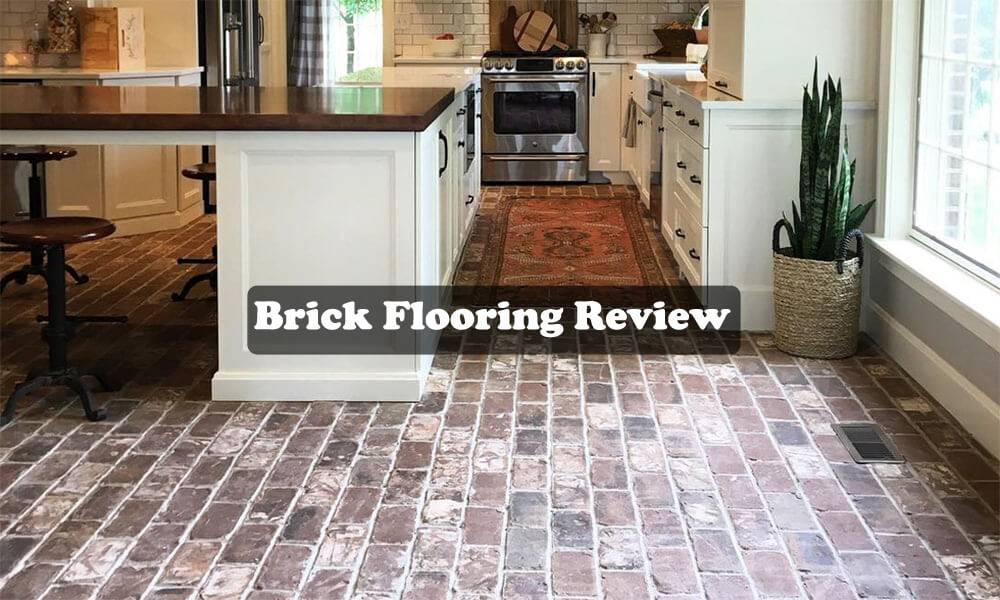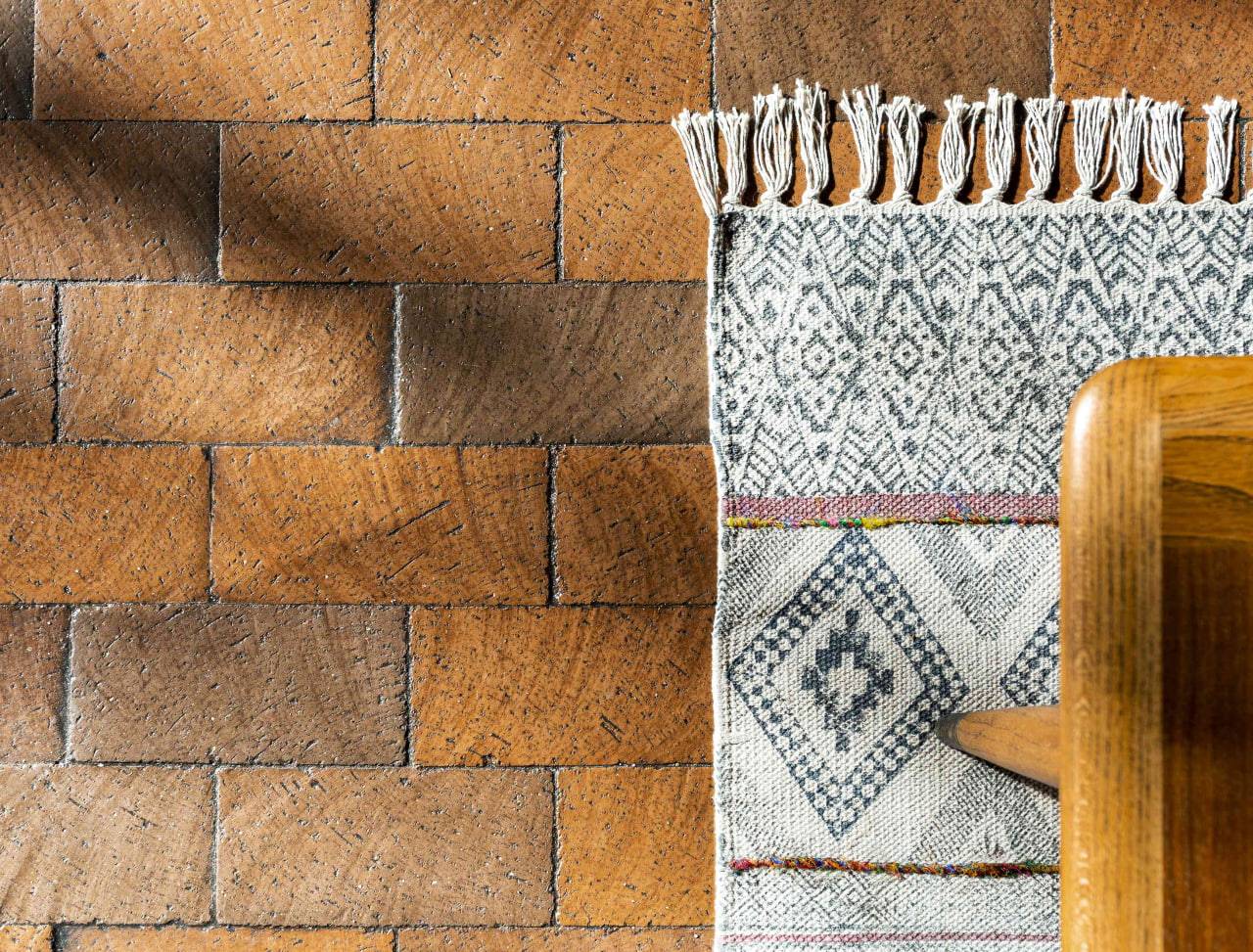For centuries, brick has stood as a cornerstone of construction, evolving from a natural stone substitute to a beloved building material in its own right. Traditionally crafted from fired clay, these versatile blocks have found purpose in walls and pavements. Today, we delve into the world of brick flooring, specifically focusing on clay pavers designed to grace your indoor spaces.
Clay pavers, unlike their thicker wall brick counterparts, boast a slimmer profile, ranging from a quarter-inch to an inch. Their composition incorporates kaolin clay, known for its fine texture, alongside shale and iron for enhanced durability. However, their installation demands a solid foundation, making concrete slabs on ground floors the preferred choice compared to wood-framed structures.
While brick flooring enchants with its enduring resilience, it’s not without its considerations. Sealing becomes crucial to shield its surface from stains, and its inherent rustic charm might not resonate with every design vision. Additionally, the inherent hardness translates to a less forgiving surface underfoot, a factor to ponder if creating a cozy haven is your primary objective.
The Enduring Appeal of Brick Flooring: A Balanced Look
Brick flooring has captured hearts (and floors) for centuries. But before you’re swept away by its undeniable charm, let’s explore both its strengths and potential drawbacks to help you make an informed decision.
Pros:
- Timeless Durability: As one of the most enduring building materials, brick flooring boasts exceptional resilience, resisting wear and tear beautifully.
- Low-Maintenance Charm: Its easy-to-clean nature makes it a breeze to maintain, a boon for busy lifestyles.
- Allergy-Friendly: Brick’s inherent properties make it a haven for allergy sufferers, as it doesn’t harbor dust mites or allergens.
- Fireproof Confidence: Offering peace of mind, brick flooring boasts excellent fire resistance, providing an extra layer of safety in your home.
- Dramatic Flair: The unique texture and natural variations in color lend a distinct visual appeal, adding a touch of drama and character to any space.
- Surefooted Confidence: The naturally textured surface provides excellent slip resistance, especially important in areas prone to moisture.
Cons:
- Firm Foundation: Be prepared for a firm surface, as the hardness of brick can be less forgiving underfoot compared to softer materials.
- Stain Watch: While easy to clean, due to its porous nature, brick can be susceptible to staining if not properly sealed. Regular maintenance and sealing are crucial to maintain its beauty.
Maintaining the Enduring Beauty of Brick Floors
Brick flooring, similar to its ceramic and stone counterparts, boasts an impressive array of practical benefits. Its inherent strength makes it an ideal choice for busy households, effortlessly withstanding the wear and tear from pets, high foot traffic, and frequent furniture rearrangements. Additionally, the hard surface translates to effortless cleaning, requiring only a quick sweep or vacuuming to maintain its pristine appearance.
However, due to its clay composition and cementitious grout, brick is inherently prone to staining if left unsealed. To combat this, a sealer is generally applied shortly after installation and periodically reapplied throughout the floor’s lifespan, forming an essential shield against potential damage.
There are two primary types of sealers available, each catering to different preferences:
- Penetrating Sealers: These solutions sink deep into the brick, preserving the original texture and colour while offering superior protection.
- Film-Forming Sealers: These sealers, often acrylic or polyurethane based, create a visible layer on top of the brick, resulting in a shinier surface that deepens the overall colour.
By understanding the unique characteristics of brick flooring and employing the appropriate maintenance strategies, you can ensure your beautiful brick floors retain their charm and functionality for years to come.
Brick Flooring: Where Charm Meets Design Versatility
Brick flooring transcends its traditional association with rustic abodes. While it undoubtedly complements cottage and farmhouse aesthetics, its versatility extends to creating a touch of timeless charm in various spaces.
- Informal Ambiance: Sunrooms, mudrooms, and entryways seamlessly embrace the informal yet sophisticated character that brick flooring brings. Its natural texture and color variations add depth and visual interest, setting the tone for a welcoming and inviting atmosphere.
- Fireplace Harmony: Brick’s noncombustible nature makes it an ideal partner for fireplaces and wood stoves. The inherent warmth of the material resonates perfectly with the crackling flames, creating a cohesive and visually appealing focal point in your home.
- Beyond the Rustic: Beyond its rustic charm, brick flooring offers a bold design element that can elevate any space. It brings a unique blend of visual warmth, texture, color, and even pattern, allowing you to create a statement floor that reflects your individual style.
Whether you’re seeking a classic rustic touch or exploring a more contemporary approach, brick flooring offers a design canvas rich in possibilities.
Bringing Brick Floors to Life: Installation Process
Installing brick flooring shares similarities with laying other tile options. Here’s a breakdown of the process:
Subfloor Preparation:
- Concrete slab: The most common scenario, as brick pavers are quite heavy.
- Wood subfloor: Possible, but requires confirmation from a building engineer to ensure the framing can handle the weight. In this case, a layer of cement board acts as underlayment between the wood and the pavers, adhered with thin-set adhesive.
Adhesion and Grouting:
- Once the subfloor is prepared, thin-set adhesive binds the brick pavers to the surface.
- After the adhesive dries, the spaces between the bricks are filled with grout, similar to ceramic or stone tiles.
Creative Configurations:
- Pre-assembled brick sheets: These offer a faster installation process, utilizing mortar for connection and allowing for various patterns depending on your design vision.
DIY Considerations:
- While the overall process resembles regular tile installation, cutting brick requires a specialized tool: a power wet saw equipped with a diamond blade. These can be rented from tool rental centers.
Remember, consulting a professional contractor can be beneficial, especially for complex installations or if you’re unsure about your subfloor’s suitability.
Brick Flooring: Balancing Beauty with Practical Concerns
While brick’s renowned durability translates to long-lasting beauty, it’s important to acknowledge the flip side of this strength: hardness. Underfoot, it can feel no more comfortable than tile, stone, or concrete, potentially lacking the softness some homeowners desire. Similarly, like other hard surfaces, it can feel cold on bare feet during colder months.
However, there’s a silver lining! Brick flooring serves as an excellent conductor for in-floor radiant heat, meaning you can enjoy warm floors despite the initial coldness to the touch. Additionally, the hardness comes with a practical benefit: it offers excellent resistance to shattering from dropped objects, a valuable feature in areas prone to spills or dropped items.
Ultimately, understanding the comfort and practicality considerations of brick flooring allows you to make an informed decision that aligns with your lifestyle and preferences.
Brick Flooring and Terra Cotta Tile: A Comparative Journey
Both brick flooring and terra cotta tiles offer unique charm and functionality, crafted from the earth’s natural wonder – clay. However, choosing between these two flooring options requires understanding their distinct characteristics:
Material and Texture:
- Brick: Typically uses coarser clays, resulting in a textured and rustic surface.
- Terra Cotta: Often relies on finer “potter’s clay,” creating a smoother and more elegant feel.
Color and Finish:
- Brick: Offers a natural reddish-brown hue due to iron content; requires sealing for protection.
- Terra Cotta: Naturally reddish due to iron; available glazed or unglazed, requiring sealing only for unglazed versions.
Size and Installation:
- Brick: Usually smaller pavers, demanding greater grouting and maintenance.
- Terra Cotta: Larger tiles, leading to fewer grout lines and easier upkeep.
Weight and Suitability:
- Brick: Heavier due to denser composition; may pose weight limitations for certain floors.
- Terra Cotta: Lighter weight; suitable for situations where brick might be too heavy.
Overall Appeal:
- Brick: Exudes a rustic and grounded charm, ideal for specific design aesthetics.
- Terra Cotta: Offers a touch of elegance and sophistication, potentially more versatile for various rooms.
By understanding these key differences, you can make an informed decision that aligns with your desired style, functionality, and practical considerations for your flooring project.
Conclusion: Timeless Beauty Meets Informed Choice
Brick flooring boasts an undeniable charm, captivating hearts and homes for centuries. While its enduring appeal lies in its strength, low-maintenance nature, and unique aesthetic, it’s crucial to weigh all factors before making your decision. Understanding its inherent hardness, staining potential, and installation considerations empowers you to choose with confidence.
Ready to explore the possibilities of brick flooring in your home?
At Dex Flooring, our team of experts is dedicated to guiding you through every step of the process, from initial design consultations to expert installation. Contact us today for a free quote and discover how brick flooring can add timeless beauty and lasting value to your space.
FAQs
Is brick flooring durable?
Absolutely! Brick flooring is renowned for its exceptional durability, resisting wear and tear beautifully for many years.
Is brick flooring easy to maintain?
Brick flooring is relatively easy to maintain. Regular sweeping or vacuuming keeps it clean, and due to its non-porous nature, it doesn’t harbor allergens. However, proper sealing is crucial to prevent stains.
Is brick flooring suitable for all rooms in my house?
While brick flooring can be installed in various rooms, it’s important to consider its inherent hardness, which might not be ideal for areas where comfort underfoot is a primary concern. Additionally, its initial coldness can be addressed with radiant heating systems.
Can I install brick flooring myself?
While the installation process shares similarities with other tile options, cutting the brick requires a specialized power wet saw. Consider consulting a professional installer, especially for complex projects or if you’re unsure about your subfloor’s suitability.
What are the different types of brick flooring?
Clay pavers are the most common type used for indoor flooring. They come in various colors and textures and are typically thinner than their wall brick counterparts. Pre-assembled brick sheets are another option, offering quicker installation and allowing for creative patterns.
What is the difference between brick and terra cotta flooring?
Both are clay-based but offer distinct characteristics. Brick uses coarser clays, resulting in a textured appearance. Terra cotta utilizes finer clay, creating a smoother surface. Brick is typically heavier and requires sealing, while terra cotta comes glazed or unglazed, with only unglazed versions needing sealing.
I love the look of brick flooring, but I’m concerned about the cost. Are there any affordable options?
While the material cost of brick can be higher than some other flooring choices, its exceptional longevity can translate to cost savings in the long run due to minimal replacement needs. Additionally, exploring different brick types and considering used or reclaimed bricks can offer more budget-friendly options.
I’m ready to learn more about brick flooring for my home. What should I do next?
Contact Dex Flooring today! Our flooring experts are happy to answer your questions, provide free consultations, and guide you through the process of bringing the timeless beauty of brick flooring to your space.




